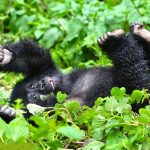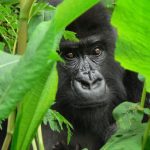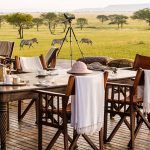Uganda Gorilla Wildlife Safari Adventure

There are reasons why Uganda is called the Pearl of Africa. Beyond its ideal climate, abundant wildlife, and spectacular natural beauty, however, it is the friendly and good-humored Ugandan people who make this country different. Drawn from more than twenty tribes, they represent a tapestry of traditions, ethnicity, and cultures.
As a society they are devoutly religious and conservative; as individuals they are surprisingly laid back. English is widely spoken but there are many cultural pitfalls to be aware of differences in expectations, customs, and ways of behaving.
Mountain gorilla safari in Uganda is most popular activity and it has gorilla-tracking options, describing the gorilla groups and their locations – in short, everything anyone who dreams of encountering these remarkable primates needs to know.
Uganda boasts the most bio diverse and arguably most exciting safari circuit in Africa, ranging from the lush montane forests of Bwindi, which protect one of the world’s largest remaining populations of mountain gorillas, to the tree-climbing lions of Queen Elizabeth National Park. Whether you are visiting on safari, for bird watching, white-water rafting on the Nile or trekking some of Africa’s highest mountains, Uganda remains a holiday adventure.
The Uganda safaris provides key insights into Ugandan life and offers practical tips on how best to meet the Ugandan people on their own term’s vital information for travelers and business people alike.
Bwindi Impenetrable Forest National Park
Lying in the remote hills of southwest Uganda, Bwindi Impenetrable Forest harbors elephants, chimpanzees, monkeys, and half the world’s population of endangered mountain gorillas. For two years, Thor Hanson called that forest home, working with local guides and trackers to develop an ecotourism program for the newly-formed Bwindi Impenetrable National Park.
Thoroughly researched and beautifully told, Hanson’s story blends natural history with cultural insight to place the forest and the gorillas in the context of modern Africa. The Impenetrable Forest offers a rare glimpse into the world of mountain gorillas, and the human cultures that surround them. A must-read for anyone interested in gorilla trekking tour, endangered species, or travel to Uganda.
The exhilaration attached to first setting eyes on a wild mountain gorilla is difficult to describe. Gorilla tracking should not present a serious physical challenge to any reasonably fit adult whatever their age, but the hike can be tough going. Exactly how tough varies greatly, and the main determining factor is basically down to luck, specifically how close the gorillas are to the trailhead on the day you trek 1–2 hours is typical, anything from 15 minutes to 8 hours possible.
Trackers must meet (with passport or photocopy at hand) at the relevant trailhead at 08.00 and will be given a short briefing about what to expect before they depart into the forest. At trailheads servicing more than one habituated group, however, the rangers usually do their best to allocate older or relatively unfit-looking trackers to whichever group they expect to be easiest to reach on the day, so if you need special consideration, best get there a bit early.
Take advantage when the guides offer you a walking staff before the walk; this will be invaluable to help you keep your balance on steep hillsides. Once on the trail, don’t be afraid to ask to stop for a few minutes whenever you feel tired, or to ask the guides to create a makeshift walking stick from a branch. Drink plenty of water, and do carry some quick calories such as biscuits or chocolate.
The good news is that in 99% of cases, whatever exhaustion you might feel on the way up will vanish with the adrenalin charge that follows the first sighting of a silver back gorilla safaris. Trackers are permitted to spend no longer than 1 hour with the gorillas’ people who sign on for the habituation experience can stay for up to 4 hours. Above all, do bear in mind that gorillas are still wild animals.
Chimpanzee Trekking
Whatever your area of interest, Uganda abounds in unforgettable activities and encounters. You can track chimpanzees in Kibale Forest. It is particularly rich in primates, with 13 species recorded, the highest for any Ugandan national park. Kibale Forest is the most important stronghold of Ugandan Red Colobus, but it supports eight other diurnal primate species: Vervet, Red-tailed, L’Hoest’s and blue monkeys; Uganda mangabey; Black-and-White Colobus; olive baboon; and chimpanzee. It also supports four species of nocturnal prosimian including the sloth-like potto.
Most prominent among Kibale’s primates is a chimpanzee population of up to 1,500 individuals, divided into at least a dozen different communities, four of which are habituated to humans. The Kanyantale Community has been the subject of daily tourist tracking excursions out of Kanyanchu since 1993. The other three are all reserved for researchers and include Ngogo, which is the world’s largest chimp community, numbering more than 200 individuals. Another community called Buraiga, whose territory lies close to Kanyanchu, is currently being habituated for tourism.
Murchison Falls National Park
Murchison Falls National Park is the largest protected area in Uganda, and one of the most exciting. Its centerpiece Murchison Falls is the most electrifying sight of its type in East Africa, with the fast-flowing but wide Nile being transformed into an explosive froth of thunderous white water as it funnels through a narrow cleft in the Rift Valley Escarpment. Murchison Falls National Park offers some superb terrestrial and boat-based game viewing, with lion, elephant, hippo, buffalo and Rothschild’s giraffe being particularly common along the north bank of the Nile.
The park is the largest component in the greater Murchison Falls Conservation Area (MFCA), which also incorporates the collectively managed 750km² Bugungu and 720km² Karuma wildlife reserves to its south. From a visitor’s perspective, the most important feature of Bugungu and Karuma is the Kaniyo Pabidi Forest, which harbors a chimpanzee community that’s been habituated for tourists, as well as a number of localized forest birds.
Most popular, and best undertaken in the afternoon with the sun in the west, is the atmospheric and all-but-obligatory return boat trip that follows the Nile from Paraa to the base of Murchison Falls. This is closely followed in the must-do stakes by a morning game drive on the Buligi Circuit, a network of game-viewing tracks traversing the 10km-wide peninsula that separates the Victoria and Albert Niles as they course in and out of Lake Albert.
The spectacular Top of the Falls Viewpoint and associated Honeymoon Track on the south side of the river, the boat trip downriver from Paraa to the bird-rich Lake Albert Delta, and the oft-neglected game-viewing road running northeast of Paraa towards Wankwar Gate.






0 Comments